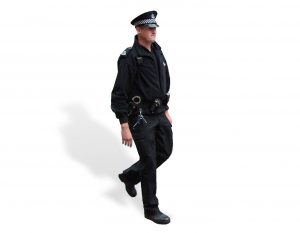 The Appeals Court recently issued a decision in Commonwealth v. Raspberry, which affirmed the denial of the defendant’s motions to suppress guns seized from her vehicle. In the decision, the Appeals Court ruled (1) that the warrantless search of CSLI (cell site location information) by the police was justified pursuant to the emergency aid exception to the warrant requirement; and (2) that the ensuing warrantless search of the defendant’s vehicle was justified pursuant to the automobile exception.
The Appeals Court recently issued a decision in Commonwealth v. Raspberry, which affirmed the denial of the defendant’s motions to suppress guns seized from her vehicle. In the decision, the Appeals Court ruled (1) that the warrantless search of CSLI (cell site location information) by the police was justified pursuant to the emergency aid exception to the warrant requirement; and (2) that the ensuing warrantless search of the defendant’s vehicle was justified pursuant to the automobile exception.
The basic facts were as follows. “[A]s part of a joint investigation with Federal authorities, the Boston police were conducting a wiretap of the telephone line of one Mike Coke pursuant to a Federal court order.” On the date in question, an officer in the ‘wire room’ was monitoring a call from Coke to an unidentified woman, and he heard her say that she was “‘going to get the fucking gun’” and was “‘going right there, right now’” to shoot someone who “‘took [her] fucking money.’” “The wire room officer found the call ‘alarming’ in that the woman on the call ‘intended to use a firearm to shoot someone.’ He checked her telephone number in various databases and identified her as the defendant. The police [inferred] that the defendant was referring to [a man named] Dorsey, with whom she had been in ‘some type of romantic relationship.’” A short time after “hearing the defendant’s threat, the officer called AT&T to initiate an ‘exigent [circumstances] request.’” He explained “that a person using an AT&T cellular telephone … might have a gun and might be about to harm another person. [The officer] provided the defendant’s cell phone number and asked AT&T to perform ‘emergency pings’ and give the police real-time CSLI [cell site location information] about the approximate location of the defendant’s cell phone. AT&T agreed to assist, and it began sending the results of the pings to [the officer] at … fifteen-minute intervals. The officer mapped the location of each ping result as it was received and shared this information with officers in the field attempting to find the defendant.” The CSLI tracked the movement of the defendant’s cell phone to an area near the housing project where Dorsey’s girl friend resided. At that point, “the officer in the wire room, still monitoring Coke’s phone calls, listened to a second conversation between Coke and the defendant. In this call, the defendant said, ‘I’m sitting right in front of [Dorsey’s girl friend’s apartment.]’…. The defendant further stated that she was going to ‘shoot [Dorsey] and his bitch in the face’; that she knew Dorsey was in the apartment because he had been texting her; [and] that she was waiting for him…. She added that if Dorsey sent anyone to attack her, it would be a ‘firefight’” Several minutes later, police officers located the defendant sitting in her car. An officer approached her and “asked her for her license and registration. When she said she did not have a license, she was ordered out of the vehicle and arrested for operating without a license.” The police then searched her car and “found a stun gun in the defendant’s purse in the passenger compartment and a loaded gun in the trunk.” After the return of indictments against the defendant, she “filed separate motions to suppress the fruits of (1) the warrantless CSLI search of her location and (2) the warrantless search of her motor vehicle.” The judge denied the motions, ruling that the CSLI search was justified under the emergency aid exception to the warrant requirement and that the search of the vehicle was justified under the automobile exception. The defendant filed an interlocutory appeal. Continue reading →
 Massachusetts Criminal Lawyer Blog
Massachusetts Criminal Lawyer Blog









